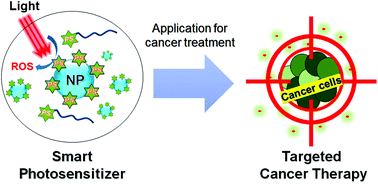Advanced smart-photosensitizers for more effective cancer treatment
Abstract
Photodynamic therapy (PDT) based upon the use of light and photosensitizers (PSs) has been used as a novel treatment approach for a variety of tumors. It, however, has several major limitations in the clinic: poor water solubility, long-term phototoxicity, low tumor targeting efficacy, and limited light penetration. With advances in nanotechnology, materials science, and clinical interventional imaging procedures, various smart-PSs have been developed for improving their cancer-therapeutic efficacy while reducing the adverse effects. Here, we briefly review state-of-the-art smart-PSs and discuss the future directions of PDT technology.



 Please wait while we load your content...
Please wait while we load your content...